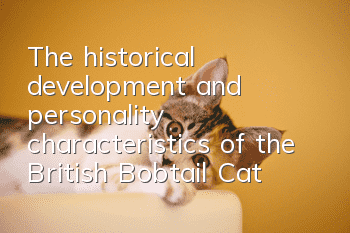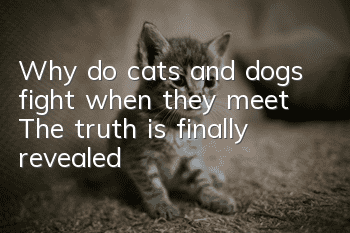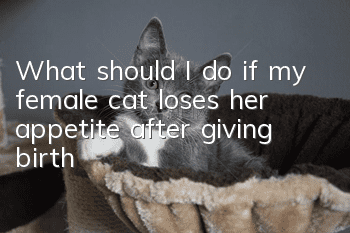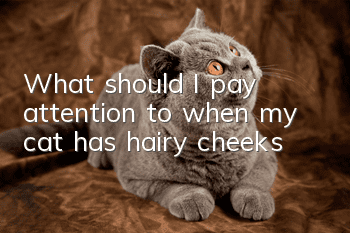The historical development and personality characteristics of the British Bobtail Cat

The British Bobtail Cat is small in size and has a wide range of coat colors. It can meet the fashion needs of different people and has a beautiful style, so it is not difficult to find it in thousands of households. Having said so much, let’s talk about the British Bobtail Cat. Do you know about the tail cat? Especially its historical development and origin. Just like we learn history, we understand the evolutionary history of humans!
British Bobtail Cat
History
The ancestors of British shorthair cats can be said to have "illustrious military exploits". As early as more than 2,000 years ago during the ancient Roman Empire, they followed Caesar in battles. During the war, they relied on their super rat-catching ability to protect the Roman army's food and grass from being eaten by rats, fully ensuring the stability of the military rear. Since then, these cats have gained a high status in people's hearts. At that time, they were brought to the UK and, relying on their strong adaptability, gradually evolved into the indigenous cats of the UK. It is not only recognized as a master mouse catcher, but its handsome appearance is also loved by more people.
By the end of the 19th century, British breeding experts selected the most beautiful cats among these indigenous cats and began a long breeding process. Finally, this breed called the British shorthair cat was born. In 1871, British shorthair cats participated in the Crystal Palace Expo in London, and the breed began to be named.
In 1901, the British Cat Club was established. At that time, the British shorthair cats were still large and strong blue-haired cats, much like the French Carter cats. Later, as their descendants became more and more similar, they were even indistinguishable from each other. So FIFE (the largest cat-loving association in the UK) decided to merge the two breeds into one.
After the Second World War, British shorthair cats with more coat colors were gradually recognized by cat clubs in various countries. They entered thousands of households and became people's companions in life.
The origin is in the UK (ancestor: British Shorthair/Siamese cat) and originated in the 1980s. It is said that the cat brought to Britain by the Romans a long time ago is the ancestor of the British shorthair cat. These cats were raised by humans to catch mice and became native British cats that were fully adapted to their living environment. Later, after improving the bloodline, it became a short-haired breed native to Britain.
Character
British shorthair cats have always been known for their curiosity, and they will carefully examine every corner of the cat. Although the British shorthair cat is bold and curious, it is very gentle and has strong adaptability. It will not change due to changes in the environment, nor will it lose its temper or make noises. It will only try to climb as high as possible. There, he lowers his head and looks down at you with his big round eyes and a smile. Because of their easy-going and intelligent nature, they are often domesticated for filming in Hollywood movies andcommercial television.
Standard
The British shorthair cat is a cat with a compact, well-proportioned and powerful body. The body is very thick, the chest is full and wide, the legs are thick, the length is short to medium, the claws are rounded, the root of the tail is thick, and the tip of the tail is blunt and rounded. The head is round, the distance between the ears is wide, the cheeks are round, the chin is strong, the ears are of medium size, the big and round eyes are wide open, and the nose is of medium width. The coat is short and very dense. Male cats have more developed gills than female cats and are larger than female cats in all aspects. It takes three to five years for this breed to fully develop and mature. Cats should show overall symmetry and proportion, and one feature should not be overemphasized, lest it induce neglect or extreme tendencies in the breeding process.
Head: Round and thick and strong. A round face and skull with a stubby neck. The forehead should be round and the top of the head should be slightly flat. There should be no slope on the forehead.
Nose: Medium length, broad. Viewed from the side, there is a slight concave.
Chin: Strong, well developed and in line with the nose and upper lip.
Muzzle: Distinctive and well-developed, with a clear boundary around the large, round bald flesh.
Ears: Ear position is very important. Medium size, wide at the base and rounded at the tips. The ears are set far apart and blend into the round outline of the head just right.
Eyes: big, round, wide open. The eyes are set wide and flat.
Body: Medium to large size. Compact structure, strong and powerful. The back is flat and there is a broad chest.
Legs: Short to medium length, well developed and strong. Proportionate to body, front legs straight.
Claws: Round and strong. The number of toes is five in front and four in back.
Tail: medium length and proportional to the body, thicker at the base and slightly thinner and rounded at the tip.
Coat: short, very dense, well set off the body shape, and feels textured. There is no double coat or down.
Color: Shaded tabby markings are not considered undesirable on solid, smoke, shaded, shaded gold, bicolor, and tricolor kittens.
.
- Why does the kitten keep eating with its bulging belly?
- What should kittens eat if they don’t have teeth? Cat Feeding!
- Will a cat's personality change after being neutered?
- What are the advantages and disadvantages of owning a cat?
- Does it mean there are bugs when a kitten is itching?
- How to remove cat lice? Don’t you know yet?
- Is catnip harmful to cats? What will happen if a cat smokes catnip?
- Things to note when breeding British Shorthair
- The cat suddenly stopped eating the cat food he had been eating.
- Symptoms of Chlamydia Infection in Cats



